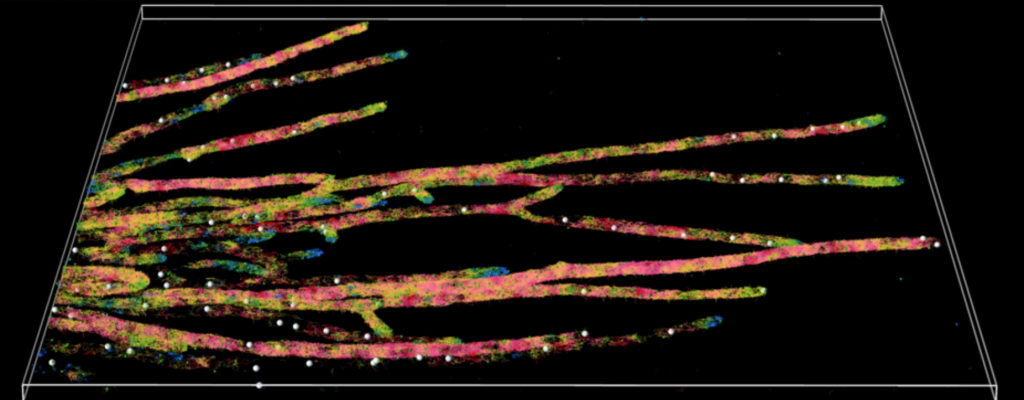Approaches & Systems
Approaches and Systems
We take advantage of large cells with many nuclei, also called syncytia, to discover fundamental principles of cell organization. These large cells are excellent models for studying how cytosol can be structured and how cells perceive their geometry. Most syncytia have been understudied in terms of cell biology. We have projects using fungi, cultured mammalian myotubes and cultured placenta cells in addition to a variety of biochemical reconstitution assays. We are early adopters of new light microscopy approaches and through collaborations with microscope developers help advance innovations in imaging. See our research questions page to see how we are applying these approaches.
- Quantitative microscopy development and image analysis of live cells
- In vitro reconstitution and biophysical analysis of cellular phase transitions and septin assembly
- Mathematical and statistical modeling
- Polarized fluorescence microscopy

Map of diffusivity throughout cytosol based on 4D tracking of particles using NetTracker (with Jay Newby and Greg Forest, UNC Math)
Useful Protocols
I. Cell Biology:
- F-actin Stain
- Tubulin Immunofluorescence
- Ashbya IF Protocol
- Fixation to Preserve GFP Signals
- TEM Protocol
- IEM TEM Protocol
- FITC ConA
- Ashbya Single Molecule FISH Procotol
- Polarization Analysis Procotol
- Yeast Extract
- Fluorescence Correlation Spectroscopy
II. Reverse Genetics:
- Ashbya Transformation
- Isolation of Genomic DNA
- PCR with GEN3 Deletion Cassette
- PCR with NAT1 Deletion Cassette
- PCR with GFP-tagging Cassette
- Verification PCR
III. Ashbya Growth and Handling:
IV. Biochemistry and RNA: